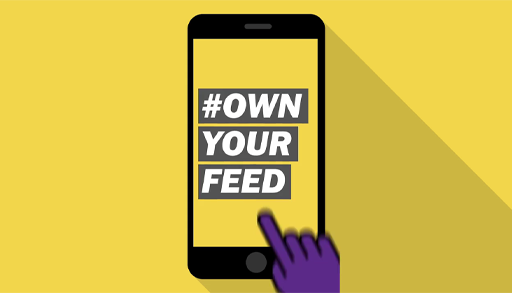2.1 Taking control
Researchers and charities are increasingly working to explore how to guide young people to manage their relationship with social media so that it has more of a beneficial impact on their wellbeing. In the next activity, you will explore some of the simple techniques they have developed.
Activity 6: Controlling a social media feed
Regardless of your personal opinions of social media and the role it is playing in the lives of the young people you work with, it is important to realise that young people are best supported by helping them to make good personal choices about social media for themselves, especially as many adolescents have individual access to mobile phones and computers. In the previous activity, you heard the young men describe how they limited their use of social media to manage the impact it had on their mental health. Watch Video 6 in which young people describe how they altered their behaviour to have a more positive time when using social media.

Transcript: Video 6: #OwnYourFeed for a more positive time online
As you watch make notes summarising the following three key pieces of advice:
- ‘Cleaning your feed’
- ‘Find your crowd’
- ‘Say hey’
Answer
This video illustrates three simple steps to helping a young person manage their social media and the impact it has on their emotional health. The key here is the message of ‘cleaning your feed’ and at its core is the idea that young people should consider how each post makes them feel and to mute or unfollow those that do not keep them interested or happy. The second step is to use social media to find like-minded people who share their interests. The final step is to use social media to connect with people, to reach out and say hey.
It can be hard to talk to young people about these things in a way that captures their attention, so it may help to ask the young person to watch the video themselves. However, campaigns like this which are driven by and informed by young people are an illustration of how many of them are increasingly aware of the impact of social media on their mental health.
Another way to help young people engage with their own social media use is to access the reminders that tell them how long they’ve been using an app or to set their own limits. For example, on Facebook, go to Your time on Facebook > Set daily reminder. They can then set their own ideal daily usage.
Being able to limit time spent on social media can also help to prevent sleep disruption. There is now a body of research that indicates ‘young people who spend more time using social media (especially at bedtime) and those who feel more emotionally connected to platforms’ report later bedtimes, take longer to get to sleep, sleep less and have poorer sleep quality (Scott et al,. 2019, p. 539). You learned about the link between sleep and adolescent mental health in Session 6. Fortunately, there are ways to mitigate sleep disruption or to use phones to help promote sleep. For example, most phones now have night time modes to ensure that blue lights emission is reduced. In addition, meditation apps have stories that can help young people wind down and get to sleep.
